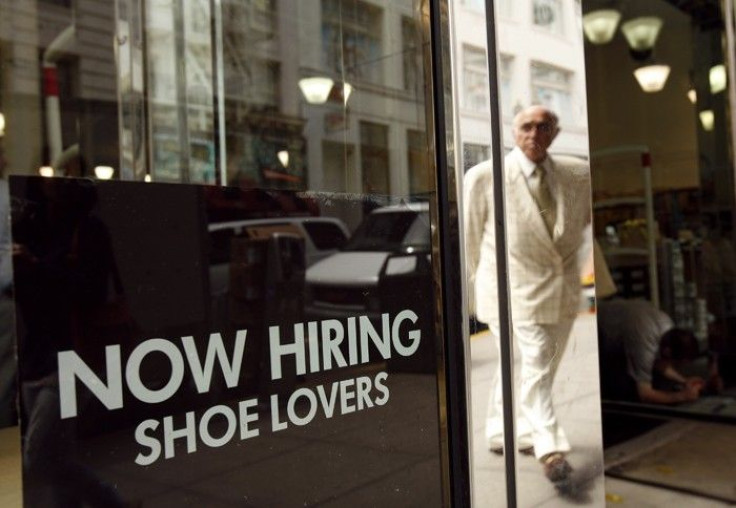Jobless claims data boosts labor market outlook

New applications for unemployment benefits dropped to a 2-1/2-year low last week, pointing to a stronger footing for the labor market as the economic recovery gathers momentum.
The fall in claims reported by the Labor Department on Thursday partly reflected the unwinding of a weather-related spike in late January but analysts said it was consistent with other indicators suggesting a strengthening labor market.
Initial claims for state unemployment benefits fell 36,000 to a seasonally adjusted 383,000, the lowest since early July 2008, the Labor Department said.
Economists, who had forecast claims slipping to 410,000, said applications need to stay below the 400,000 level for some time to signal consistent job growth.
We had a bit of volatility due to all the harsh weather, said Mark Vitner, a senior economist at Well Fargo Securities in Charlotte, North Carolina. Despite all that, layoffs seem to be trending down and that should allow for job growth to pick up over the next few months.
The data followed Friday's report that showed only 36,000 jobs were created in January, which was blamed on severe snow storms that lashed large parts of the country. But the jobless rate in January fell to a 21-month low of 9 percent.
A Labor Department official said claims were still unwinding some of the weather effects that pushed up filings late last month. Some economists said blizzards last week in the country's Midwest could also have been a factor.
Still, investors saw the claims report as yet more evidence that the economic growth pace was accelerating. Safe-haven U.S. government bond yields rose, while the dollar gained broadly.
A weak earnings outlook from Cisco Systems Inc pulled U.S. stocks lower and the Dow Jones industrial average was on track to snap an eight-day rally.
The economy grew at a 3.2 percent in the fourth quarter and all indications are that solid growth momentum will continue through much of this year.
COMPANIES ARE HIRING
That brightening outlook bodes well for the labor market. Offering more anecdotal evidence of a pick-up in hiring, consulting firm Deloitte will add about 18,000 jobs by May, just over two-thirds of which will be in the United States, returning to pre-crisis hiring levels.
We are seeing growth and we are seeing a fairly steady increase in certain market segments and it's projected to continue into our next fiscal year, Deloitte's National Campus Recruiting leader Diane Borhani told Reuters.
But given the magnitude of job losses during the recession, the unemployment rate will remain high. Federal Reserve Chairman Ben Bernanke told lawmakers on Wednesday it could take about four years to get the jobless rate down to its normal range between 5 percent and 6 percent.
A separate report from the Commerce Department showed wholesale inventories rose 1 percent to their highest since January 2009. The gain beat the 0.7 percent increase forecast by economists.
Economists said the inventory data had no impact on the government's advance gross domestic product growth estimate as the surge was driven by the auto component.
Wholesale inventories, excluding autos rose much less than the government had anticipated its advance estimate. December's trade report on Friday and business inventories data on Tuesday will offer more clues on whether the advance GDP growth estimate will be revised later this month.
Underscoring the firming labor market tone, the four-week moving average of unemployment claims -- a better measure of underlying trends - dropped 16,000 to 415,500 last week.
It is just not possible for claims to fall this far and not see some beneficial effect in payrolls. After the weather-affected January report, we think February payrolls will rise by about 250,000, said Ian Shepherdson, chief U.S. economist at High Frequency Economics in Valhalla, New York.
The number of people still receiving benefits under regular state programs after an initial week of aid declined 47,000 to 3.89 million in the week ended January 29. Economists had expected so-called continuing claims to fall to 3.90 million.
(Additional reporting by Mark Felsenthal; Editing by Neil Stempleman)
© Copyright Thomson Reuters 2024. All rights reserved.











